
Rick Dangerous is a platform game developed by Core Design for the Acorn Archimedes, Amiga, Atari ST, Amstrad CPC, ZX Spectrum, Commodore 64, and MS-DOS. The game was released in 1989 and published by MicroProse on the Firebird Software label in the UK, and on the MicroPlay label in America. It was also published in Spain by Erbe Software. Later, it was released with two other games, Stunt Car Racer and MicroProse Soccer, on the Commodore 64 Powerplay 64 cartridge. The game was followed by a sequel, Rick Dangerous 2, in 1990. Loosely based on the Indiana Jones film franchise, the game received mixed reviews from critics.

Out Run is an arcade driving video game released by Sega in September 1986. It is known for its pioneering hardware and graphics, nonlinear gameplay, a selectable soundtrack with music composed by Hiroshi Kawaguchi, and the hydraulic motion simulator deluxe arcade cabinet. The goal is to avoid traffic and reach one of five destinations before time runs out.

Knight Lore is a 1984 action-adventure game developed and published by Ultimate Play the Game, and written by company founders Chris and Tim Stamper. The game is known for its use of isometric graphics, which it further popularized in video games. In Knight Lore, the player character Sabreman has forty days to collect objects throughout a castle and brew a cure to his werewolf curse. Each castle room is depicted in monochrome on its own screen and consists of blocks to climb, obstacles to avoid, and puzzles to solve.
Newsfield Publications Ltd was a British magazine publisher during the 1980s and early 1990s.

Barbarian: The Ultimate Warrior is a 1987 video game developed and published by Palace Software for the Amstrad CPC, Commodore 64, and ZX Spectrum. The game was ported to many other systems and was licensed to Epyx who published it as Death Sword in the United States.
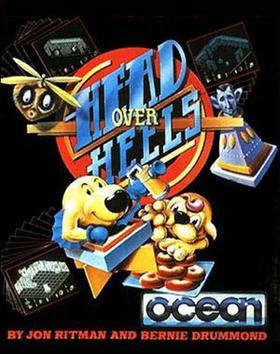
Head Over Heels is an action-adventure game published by Ocean Software in 1987 for several home computers. It uses an isometric engine similar to the Filmation technique first developed by Ultimate Play the Game. Head Over Heels is the second isometric game by Jon Ritman and Bernie Drummond, after their earlier Batman computer game was released in 1986. The game received favourable reviews and was described by Zzap!64 as an "all time classic".
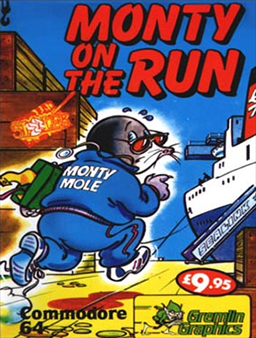
Monty on the Run is a computer game created by the software house Gremlin Graphics and released in 1985 for the Commodore 64, ZX Spectrum, Amstrad CPC and Commodore 16, written by Peter Harrap for the ZX Spectrum with the iconic in-game music on the Commodore 64 provided by Rob Hubbard. It is the third game in the Monty Mole series.

Aaargh! is a single-player action video game in which the player controls a giant monster with the goal of obtaining eggs by destroying buildings in different cities across a lost island. It was designed for Mastertronic's Arcadia Systems, an arcade machine based on the custom hardware of the Amiga, and was released in 1987. It was ported to a range of other platforms and released on these across 1988 and 1989. Electronic Arts distributed the Amiga version of the game.

The Trap Door is a video game published for the ZX Spectrum in 1986 by Piranha Software and ported to the Amstrad CPC and Commodore 64 by Five Ways Software. It was written by Don Priestley and based on the British children's television show of the same name.

Kong Strikes Back! is a 1984 platform video game published by Ocean Software in 1984 for the Amstrad CPC, Commodore 64 and ZX Spectrum. While its predecessor, Kong, is a Donkey Kong clone, Kong Strikes Back! is a clone of Mr. Do's Wild Ride with Donkey Kong-inspired graphics.
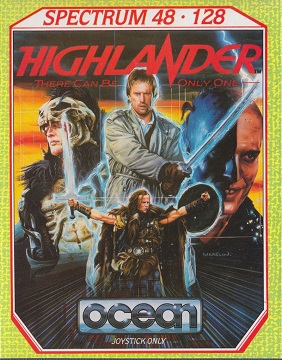
Highlander is a 1986 fighting game developed by Canvas and published by Ocean Software for the ZX Spectrum, Commodore 64, and Amstrad CPC home computers. It is based on the 1986 film of the same name. Highlander was panned by reviewers.

Barbarian II: The Dungeon of Drax is a video game first published in 1988 for various home computers. It was released as Axe of Rage in North America. The game is the sequel to Barbarian: The Ultimate Warrior, which was published in 1987. In Barbarian II, the player controls a princess or barbarian character, exploring the game world to locate and defeat an evil wizard. The game's plot is an extension of its predecessor, although the gameplay is different. While the first game offers two players the opportunity for virtual head-to-head combat, the second is a single-player beat 'em up with fewer fighting moves. It uses a flip-screen style instead of scrolling.

Firelord is an action-adventure game written by Stephen Crow and released in 1986 for ZX Spectrum, Amstrad CPC and Commodore 64 by Hewson Consultants. The game's opening theme was composed by Ben Daglish.
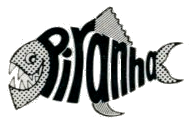
Piranha Software was a short-lived video game publishing label created by Macmillan Publishers in 1986 and closed eighteen months later. In that time it gained a reputation for its unusual output from well known developers such as Don Priestley, Design Design and Delta 4. The majority of their games featured licensed properties including the first video game based on the Discworld novels and two games based on the animated television series The Trap Door.

Thanatos is an action game developed and published by Durell Software in 1986 for the ZX Spectrum, Commodore 64 and Amstrad CPC.

Nosferatu the Vampyre is an action game based on the film of the same name and runs on the Amstrad CPC, Commodore 64 and ZX Spectrum computers. It was developed by Design Design and published by Piranha Software in 1986.
Vinyl data is the use of vinyl discs to store sequenced/encoded data rather than for simple analog recordings. This alternate use of the storage medium enabled the code of full motion videos (FMVs) and even simple video games to be stored in an analog format along with the soundtrack and sound effects. These vinyl data discs took two forms: the FMV-only Capacitance Electronic Disc (CED), and the program sheet. Uncommon even in the early 1980s when the practice was at its height, program sheet game data required that users record from the disc onto an audio cassette tape which could then be used via the cassette port with microcomputers such as the BBC Micro, Commodore 64, Commodore PET, VIC-20, Dragon 32/64, ZX81, or ZX Spectrum. The use of CEDs to store video game FMV data was even less common, and required the game console to select a section of the grooved track to read with its stylus at just the right time for the video to be displayed. The numerous limitations of these techniques contributed to their failure to receive widespread acceptance and video game data stored in this manner remains some of the most difficult to archive and preserve.

Spitfire 40 is a combat flight simulation video game developed by Novotrade and published by Mirrorsoft for the Commodore 64 in 1985.
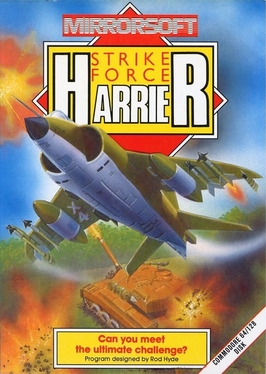
Strike Force Harrier is a 1986 combat flight simulation video game designed by Rod Hyde and published by Mirrorsoft for the 8-bit home computers. 16-bit ports were released later.

Gladiator is a fighting video game published by Domark Limited for the 48K ZX Spectrums in 1985. Ports for the Amstrad CPC, Commodore 64 and 128K ZX Spectrums were released in 1986.


















